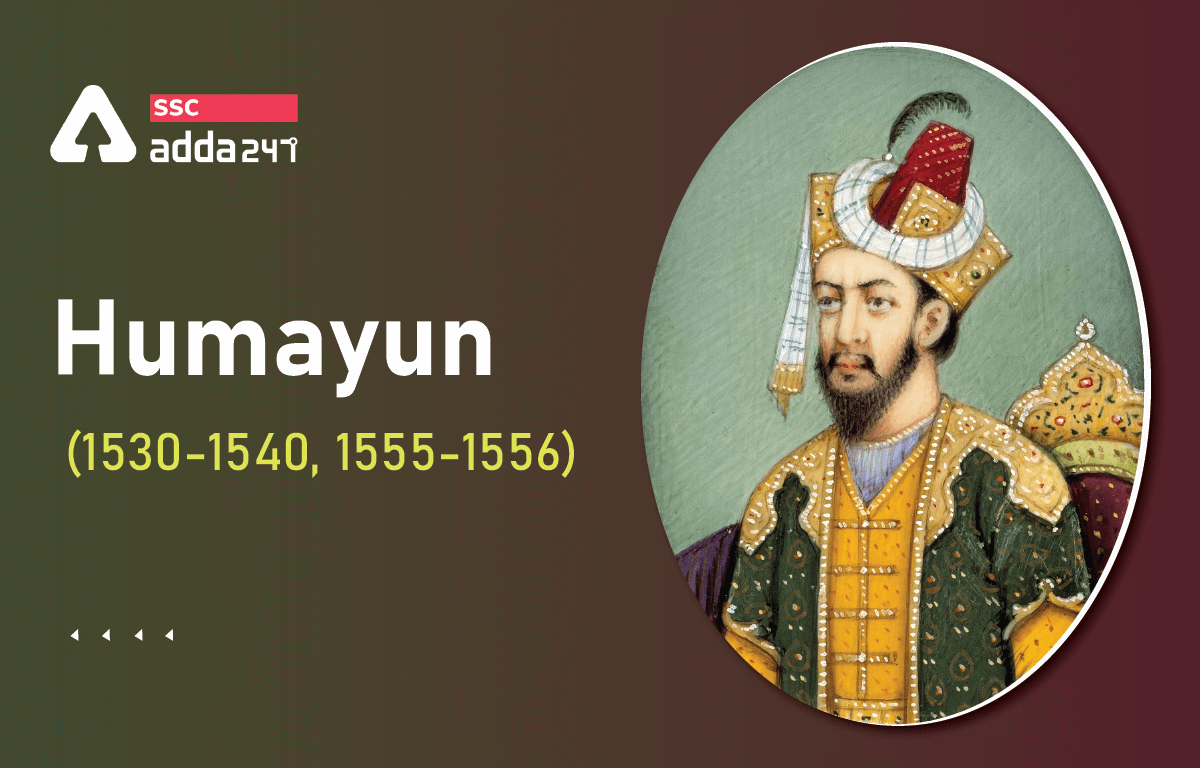Table of Contents
Humayun (1530-1540, 1555-1556)
- Humayun was the eldest son of Babur and his successor.
- Humayun became the second Mughal Emperor of India.
- Humayun, also called Naṣir al-Din Muḥammad, was born on March 6, 1508, in Kabul (Afghanistan) and died in January 1556 in Delhi (India).
- The meaning of Humayun is “fortune” but he remained the most unfortunate ruler of the Mughal Empire.
- After six months of his succession, Humayun achieved the following milestones:
- Humayun besieged the fortress of Kalinjar in Bundelkhand
- He gained a decisive victory over Afghans at Douhrua
- He drove out Sultan Mahmood Lodhi from Jaunpur
- He also defeated Bahadur Shah of Gujarat
- His victories, however, were short-lived due to the weakness of his character.
- In 1532, Humayun captured Gujarat from Bahadur Shah and appointed Askari as its governor but soon Bahadur Shah regained the kingdom from Askari who fled from there.
- In the East, Sher Khan became powerful.
- In the Battle of Chausa of 1539, Humayun marched against Sher Khan. However, Sher Khan destroyed the Mughal army and Humayun escaped from there.
- In the Battle of Bilgram or Ganges of 1540 also known as the Battle of Kanauj, Humayun was forced to fight with Sher Khan alone, and once again the Mughals were defeated.
- Humayun lived in exile for the next fifteen years.
- In 1952, while he was wandering in the deserts of Sindh, Humayun married Hamida Banu Begum, daughter of Sheikh Ali Amber Jaini who had been a preceptor of Humayun’s brother Hindal.
- On November 23, 1542, Humayun’s wife gave birth to Akbar.
- In 1545, with Persian help, Humayun captured Kandhar and Kabul.
- Humayun defeated the Afghans in 1555 and recovered the Mughal throne.
- After six months, he died in 1556 due to his fall from the staircase of his library.
- Humayun was a kind and generous human being, though he was not a good General and warrior.
- He loved painting and used to write poetry in the Persian language.
Humayun’s Tomb, Delhi
Humayun’s Tomb located in the eastern part of Delhi is the first-of-its-kind opulent mausoleum built in India. It is also the first garden-tomb in the country. This tomb also known as Maqbara-e-Humayun, looks less like a tomb and more like a luxurious palace. This fascinating mausoleum is the first example of Mughal architecture in India.
Humayun’s Tomb, Mughal Architecture
Humayun’s Tomb was built near River Yamuna by his first wife Begum Bega aka Haji Begum to immortalize the memory of her husband. Though Humayun died in 1556, it wasn’t until 1565 that the construction of the mausoleum began. After seven years of construction, the tomb and the surrounding Charbagh Garden were completed in 1572. Humayun’s tomb inspired the construction of the more famous Taj Mahal.
- The architecture of the grand tomb is strongly influenced by Persian architecture.
- The architect of the building Mirak Mirza Ghiyas himself whom the Begum herself chose was of Persian origin.
- Ghiyas constructed the tomb in the centre of a Persian-style Chahar bagh garden (translated from Farsi as four gardens) with a quadrilateral layout.
- The garden, divided into four main parts by paved walkways, water channels, and a pavilion is created to resemble the paradise garden described in the Quran.
- These four main parts, in turn, are separated by channels further dividing into 36 parts. The height of Humayun’s Tomb is 47 meters, and its breadth is 91 meters.
Humayun’s Son, Akbar
- Akbar was one of the greatest rulers in the Mughal empire. His full name was Jalal ud Din Mohammad Akbar.
- He ruled from 1556 to 1605 AD for 26 years.
- He was born in 1542 to King Humayun and his wife Begum Hamida Banu.
- Akbar became the emperor when he was only 14 years old. Under his rule, the Mughal Empire underwent great expansion.
-
He was born in the Rajput palace of King Rana Prasad who gave them refuge when Sher Shah Suri attacked Humayun.
-
In 1556 Bairam Khan declared Akbar, the “Shashanshah” in Punjab.
-
Bairam Khan acted as Akbar’s regent for the first five years. Akbar then sent him to Mecca.
-
Akbar significantly expanded his father’s empire through successful military conquests and smart political marriages with Rajput families.
- Akbar gained control over Delhi, Agra, Lahore, Multan, and Malwa.
- From 1561, he concentrated on Rajputana and fought in conflict with the Rajputs.
- He was able to defeat the Rajputs and he erected a new capital, Fatehpur Sikri.
- He also seized Bengal and Gujarat, with Kabul, Baluchistan, and Kandahar following later.



 Free Study Material for CBSE Junior Assi...
Free Study Material for CBSE Junior Assi...
 Free Study Material for SSC CGL 2025, Do...
Free Study Material for SSC CGL 2025, Do...
 Section-Wise Preparation Strategy for RR...
Section-Wise Preparation Strategy for RR...


